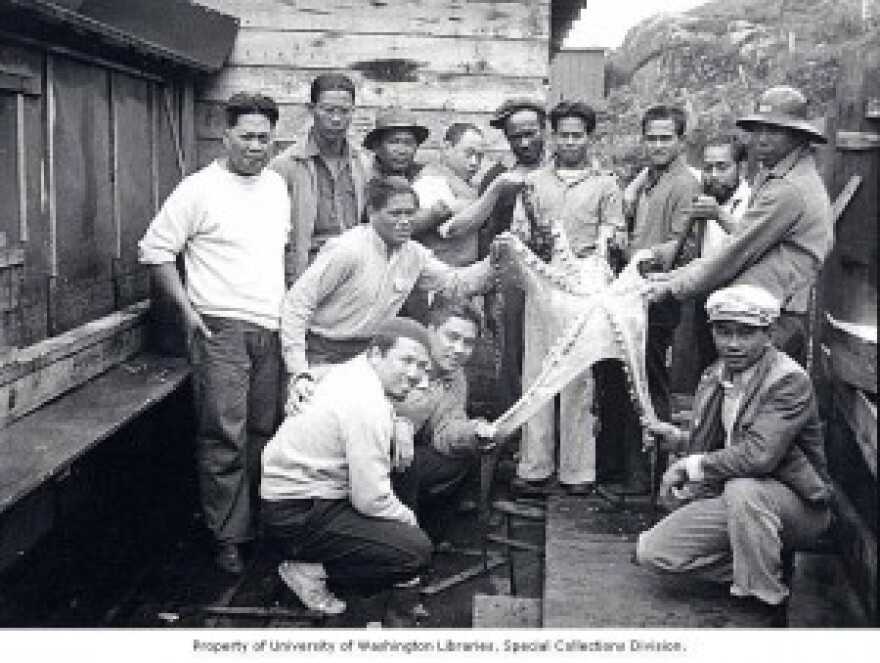Although Filipino-Americans have lived and worked on Kodiak Island for more than 150 years and make up more than 35 percent of Kodiak’s current-day population, there has never been a museum exhibit or published research on the island documenting their contributions to Kodiak’s culture and history.
Until now.
Kodiak’s Filipino Community Stories, a digital storytelling exhibit produced by Kodiak Middle School and Kodiak High School ethnography students in collaboration with the Filipino American Association of Kodiak, opens Friday, October 5 at the Baranov Museum.
The Alaska Humanities Forum supported the exhibit with a 2012 general grant of $8,500. The opening is timed in conjunction with National Filipino American History Month.
Student filmmakers in the project conducted historical research, interviewed community members, gathered dozens of historic photographs and shot and edited nine short films on the under-explored history of Kodiak's largest ethnic minority. (Pictured below: Filipino cannery workers with Giant Pacific Octopus, Alitak, Kodiak Island, ca. 1937)
The exhibit will be featured at the Baranov Museum until January 2013. Thereafter a digital kiosk at the museum will permanently display the films. (See embedded links to three films below.)
Admission to the October 4 opening is free. Mary Guiles Hawver, President of the Filipino American Association of Kodiak and one of two Tradition Bearers who advised the students for the project, will cut the ribbon in the main exhibit room at 5 p.m. The Filipino American Association of Kodiak will serve pancit (pan fried noodles), lumpia (Filipino egg rolls) and other traditional Filipino dishes.
Here are three of the films in Kodiak's Filipnio Community Stories:
Filipinos in the Aleutian Homes, by 11th grader James Guilas, which explains and celebrates the history of Filipinos living in Kodiak's historic Aleutian Homes neighborhood through the lens of its residents as well as a local Land Title Agent.
Remembering the Workers, by 7th grader Rev Jacod Roy, which explores the history of Filipino Cannery Workers Unions through the lens of the NEFCO vs. Domingo court case, a case that emerged from discrimination in the Uganik Cannery.
Denis' Story by 12th grader Olivia Bennett, which explores Filipinos on Kodiak in the early 1900s through the international migratory story of Denis Rodill, who served as a cannery worker in Larsen Bay in the summer of 1915.


